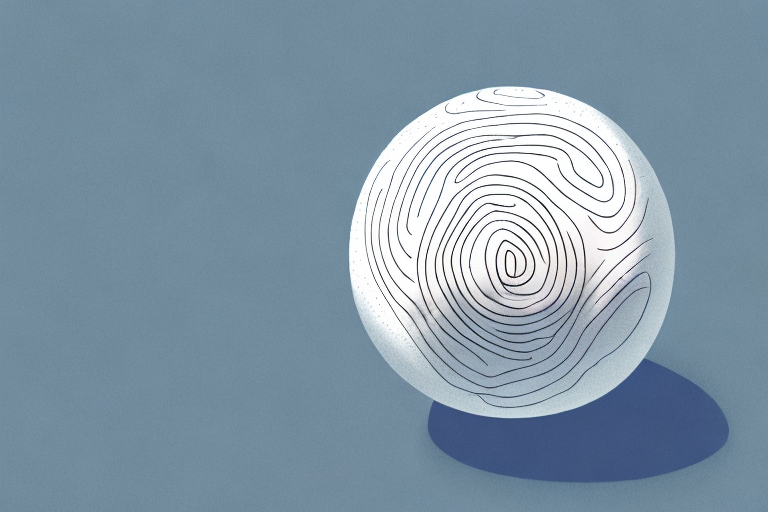If you’ve ever experienced a sharp pain in your buttocks that radiates down your leg, you may have piriformis syndrome. The piriformis muscle, located in the buttocks, can become tight or overstretched, which can cause compression on the sciatic nerve and result in pain, numbness or tingling in the lower back, buttocks, and legs. Fortunately, there is a way to alleviate piriformis pain and discomfort using a trigger point massage ball.
What is the Piriformis Muscle and Why Does it Cause Pain?
The piriformis muscle is located deep in the buttocks and is responsible for stabilizing the hip joint and rotating the thigh bone. When the muscle becomes tight or inflamed, it can cause compression on the sciatic nerve and result in piriformis syndrome. This syndrome can occur due to overuse, trauma, or prolonged sitting or standing.
Some common symptoms of piriformis syndrome include pain in the buttocks, hip, and lower back, as well as numbness and tingling down the back of the leg. It can also cause difficulty with sitting and standing for long periods of time. Treatment options for piriformis syndrome include stretching and strengthening exercises, massage therapy, and in severe cases, surgery. It is important to seek medical attention if you suspect you may have piriformis syndrome, as it can lead to chronic pain and discomfort if left untreated.
Understanding Trigger Points and How They Contribute to Piriformis Pain
Trigger points are localized areas of muscle tension that can lead to pain and discomfort. In the case of piriformis pain, trigger points can form in the muscle due to overuse or trauma, and worsen with prolonged sitting or standing. These trigger points can cause referred pain not only in the buttocks but down the leg as well. It’s important to identify and address these trigger points to alleviate pain and prevent it from recurring.
One effective way to address trigger points in the piriformis muscle is through trigger point release therapy. This involves applying pressure to the affected area to release the tension and promote healing. Other treatments for piriformis pain may include stretching exercises, massage therapy, and anti-inflammatory medication. It’s important to consult with a healthcare professional to determine the best course of treatment for your specific condition.
Choosing the Right Trigger Point Massage Ball for Piriformis Pain Relief
When choosing a trigger point massage ball for piriformis pain relief, it’s important to select one that is appropriate for the level of pressure you can tolerate. A harder ball may apply more pressure, but may be too painful for some individuals. A softer ball may not provide enough pressure to effectively release the trigger points. Experiment with different types of trigger point massage balls until you find one that works best for you.
It’s also important to consider the size and texture of the massage ball. A larger ball may be more effective for targeting the piriformis muscle, while a smaller ball may be better for reaching trigger points in other areas of the body. Additionally, some massage balls have textured surfaces that can provide a deeper massage and help to stimulate blood flow. Consider your individual needs and preferences when selecting a trigger point massage ball for piriformis pain relief.
How to Properly Position Yourself for Using a Trigger Point Massage Ball on the Piriformis Muscle
Positioning yourself correctly is key to effectively use a trigger point massage ball on the piriformis muscle. Start by sitting on the floor with the massage ball under one buttock. Cross your opposite leg over the knee of the leg you’re working on and lean your weight onto the ball. Slowly roll the ball back and forth over the affected area, pausing on any tender spots, for 1-2 minutes.
It’s important to note that if you experience any sharp or intense pain during the massage, you should stop immediately. Additionally, it’s recommended to perform this massage on a soft surface, such as a yoga mat or carpet, to avoid discomfort. After completing the massage on one side, switch to the other side and repeat the process. Regular use of a trigger point massage ball on the piriformis muscle can help alleviate pain and discomfort associated with sciatica and other conditions.
Step-by-Step Guide: Using a Trigger Point Massage Ball to Relieve Piriformis Pain
To effectively use a trigger point massage ball to relieve piriformis pain, follow these steps:
- Start by sitting on a yoga mat or a firm surface with the massage ball under one buttock.
- Cross your opposite leg over the knee of the leg you’re working on and lean your weight onto the ball.
- Slowly roll the ball back and forth over the affected area, pausing on any tender spots, for 1-2 minutes.
- Repeat on the other buttock.
- For added pressure, you can place the ball between your buttocks and squeeze your glutes together for 10-15 seconds.
- Perform the exercise daily for best results.
It is important to note that while using a trigger point massage ball can be effective in relieving piriformis pain, it is not a substitute for seeking medical advice from a healthcare professional. If you experience persistent or severe pain, it is recommended that you consult with a doctor or physical therapist to determine the best course of treatment for your specific condition.
Other Effective Techniques for Managing Piriformis Pain at Home
In addition to using a trigger point massage ball to relieve piriformis pain, there are other techniques you can do at home to manage your symptoms. These include:
- Performing piriformis stretches regularly to improve flexibility and prevent trigger points from forming.
- Using a foam roller on the buttocks and outer thighs to release tension and tightness in the muscles.
- Applying heat or ice to the affected area to reduce inflammation and alleviate pain.
- Taking over-the-counter pain medications, such as ibuprofen, if your symptoms are severe.
When to Seek Professional Help for Persistent or Severe Piriformis Pain
If your piriformis pain persists despite home remedies or worsens over time, it’s important to seek professional help from a healthcare provider. They can evaluate your symptoms, rule out any underlying conditions, and recommend appropriate treatment options, including physical therapy or in severe cases, surgery.
Precautions and Safety Tips for Using a Trigger Point Massage Ball on the Piriformis Muscle
When using a trigger point massage ball on the piriformis muscle, it’s important to use caution to avoid worsening your symptoms. Follow these precautions and safety tips:
- Start with a softer ball and apply gentle pressure initially, working up to more pressure as needed.
- Avoid rolling the ball directly on the sciatic nerve.
- If you experience more pain or numbness during the exercise, stop immediately and seek medical attention.
Conclusion: How Regular Use of a Trigger Point Massage Ball Can Improve Your Quality of Life
Piriformis pain can be debilitating, but incorporating trigger point massage ball therapy can alleviate symptoms and prevent the development of trigger points. Regular use of a trigger point massage ball, along with other home remedies and medical interventions, can help you manage your symptoms and improve your overall quality of life.





